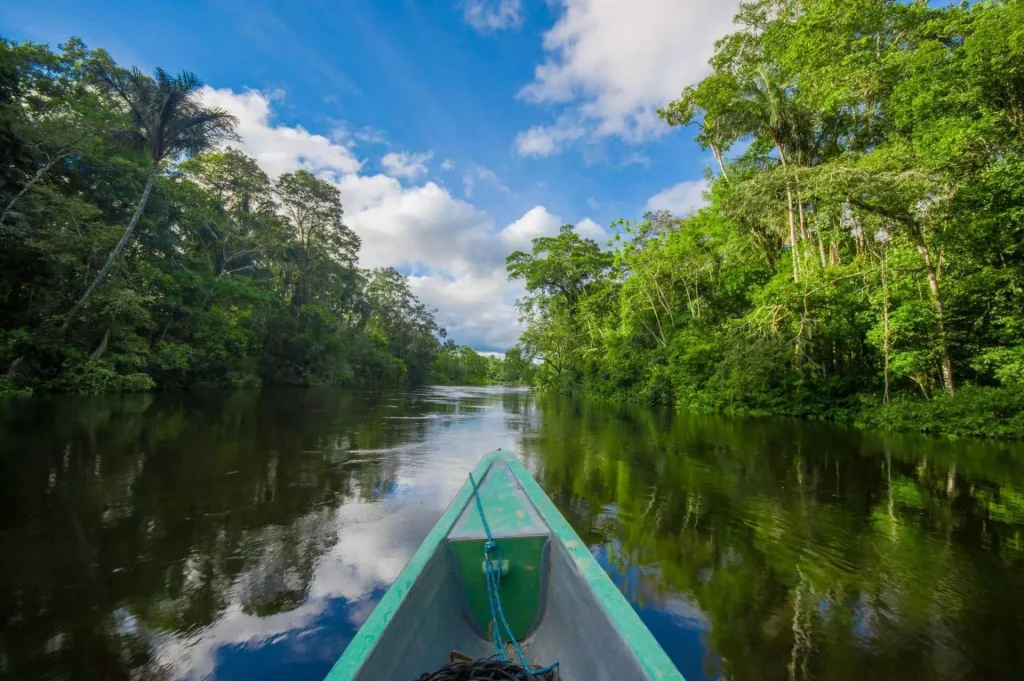Eco-tourism in the Amazon Rainforest offers a unique opportunity to experience one of the most diverse and ecologically significant ecosystems on the planet while promoting conservation and sustainable practices. This type of tourism aims to minimize the negative impact on the environment and local communities while providing educational and immersive experiences for visitors. Here are some key aspects of eco-tourism in the Amazon Rainforest focusing on conservation and wildlife experiences:

Biodiversity Conservation:
Eco-tourism initiatives in the Amazon prioritize the conservation of the region’s rich biodiversity. This involves supporting and actively participating in projects that protect endangered species, reforest areas, and monitor wildlife populations.
Responsible Tourism Practices:
Tour operators follow responsible and sustainable tourism practices to minimize their ecological footprint. This includes using eco-friendly accommodations, promoting waste reduction, and ensuring that activities have minimal impact on the environment.
Community Involvement:
Eco-tourism often involves working closely with local communities. Initiatives include employing local guides, supporting community-based projects, and providing economic incentives for communities to actively participate in conservation efforts.
Educational Programs:
Visitors educates themselves about the importance of the Amazon Rainforest, its unique ecosystems, and the threats it faces. Guided tours often include information about the flora, fauna, and indigenous cultures, fostering a greater understanding of the region’s significance.
Wildlife Watching and Photography:
Controlled and responsible wildlife watching tours are organized to observe animals in their natural habitat. Guides are trained to minimize disturbance to wildlife and adhere to ethical guidelines for photographing and interacting with animals.
Research and Monitoring:
Some eco-tourism initiatives actively contribute to scientific research and monitoring programs. Tourists may have the opportunity to participate in data collection activities, aiding ongoing conservation efforts.
Low-Impact Accommodations:
Lodges and accommodations are designed to have minimal impact on the environment. This can include using renewable energy sources, sustainable building materials, and waste reduction practices.
Guided Eco-Tours:
Knowledgeable guides lead eco-tours, providing insights into the intricate ecosystems of the Amazon. This not only enhances the visitor experience but also raises awareness about the importance of conservation.
Conservation Partnerships:
Many eco-tourism initiatives collaborate with environmental organizations, NGOs, and government agencies to contribute directly to conservation projects and initiatives aimed at protecting the Amazon Rainforest.
Carbon Offsetting and Sustainable Transportation:
Some eco-tourism programs include carbon offsetting initiatives and promote sustainable transportation options to reduce the overall environmental impact of travel to and within the Amazon.
Conclusion
By embracing these principles, eco-tourism in the Amazon Rainforest can contribute to the preservation of this vital ecosystem while providing visitors with meaningful and educational experiences. It’s crucial for both operators and tourists to prioritize sustainable practices to ensure the long-term viability of the region.
While using BNESIM you can promote a deeper understanding and appreciation of wildlife. BNESIM provides eSIM plans which let travelers contribute to the preservation of natural habitats by reducing the amount of garbage generated by the tourism sector.
